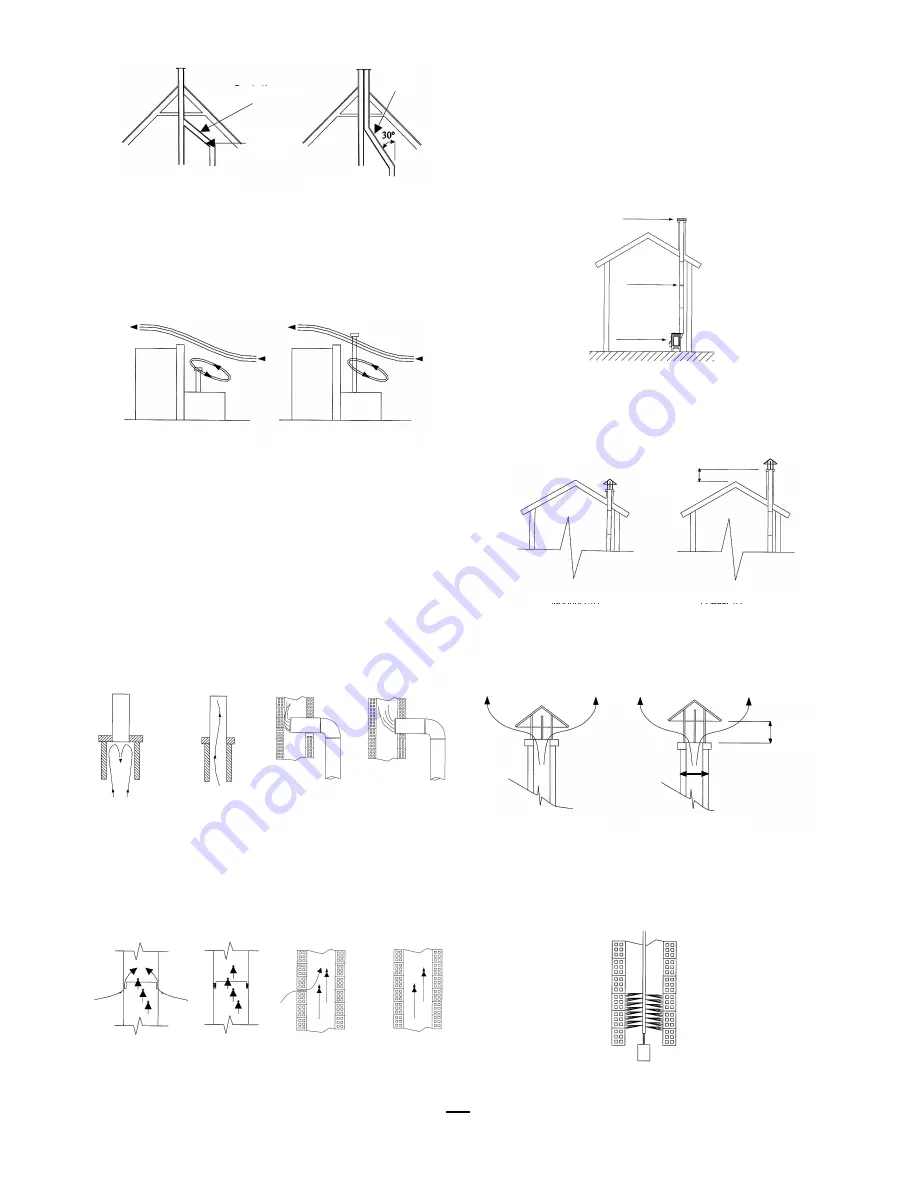
16
c) Do not install the duct outlet in areas near buildings. If the-
re are adjacent buildings then the outlet duct must be higher than
the highest building.
Fig. 9
Fig. 10
Fig. 5
Fig. 6
Fig. 7
Fig. 4
Fig. 3
g)
It is very important
that the chimney is one metre higher
than the highest part of the house.
h) So that the cowls do not impede the draught
Fig. 8
d) For the piping choose a place which is the least exposed to
cooling influences as possible. If possible, the chimney should be
inside the house.
e) The inner walls should be perfectly flat and free from any
obstacles. Avoid any bends where the pipe joins the brick chim-
ney.
f)
It is very important
that the joins of the pipes are well sea-
led to cover any possible cracks which will allow air to enter .....
The following procedure is to test that the chimney is water
tight:
Cover the exit in the roof.
Put paper and wet straw in the lower part of the chimney and
light them.
See if any smoke comes out of any possible cracks and seal
them.
INCORRECT
INCORRECT
CORRECT
CORRECT
INCORRECT
CORRECT
INCORRECT
CORRECT
INCORRECT
CORRECT
INCORRECT
CORRECT
INCORRECT
CORRECT
INCORRECT
CORRECT
Pipe of insufficient
length
Correct
deviation
A tile to close the chimney
At least one
metre higher
Smoke escape
(cover)
Papers and
wet straw
Too flat a deviation
Ash
accumulation
At least the
same diameter Ø
i) Clean the chimney at least once a year
Ø



























